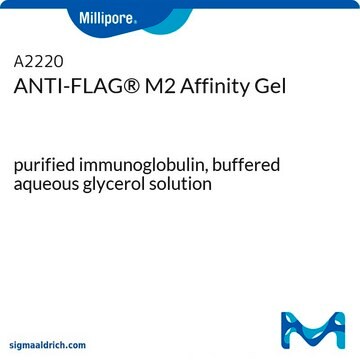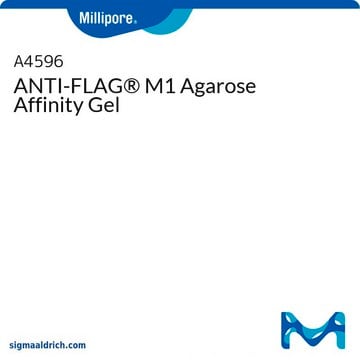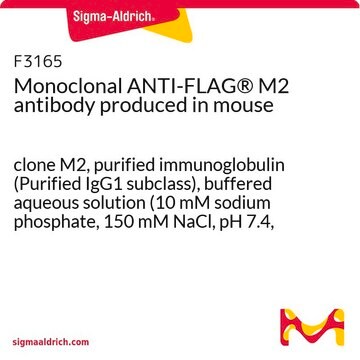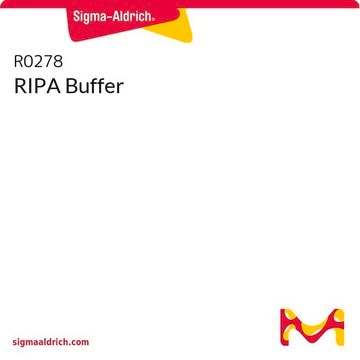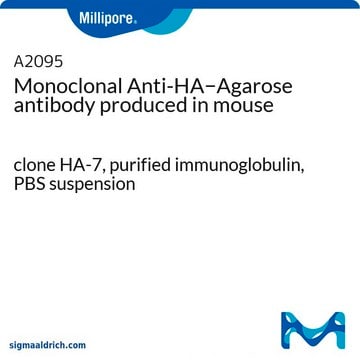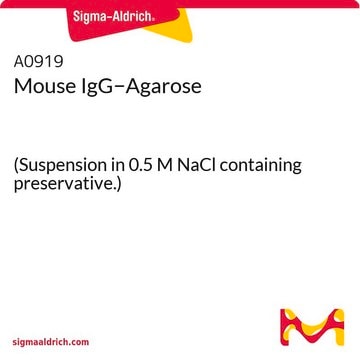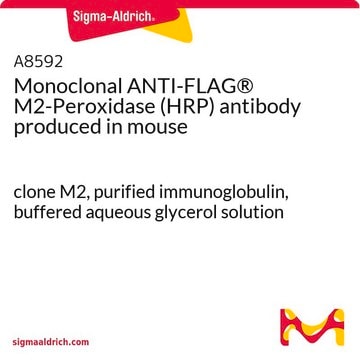推薦產品
無性繁殖
M2, monoclonal
品質等級
分析物化學類別
proteins
技術
affinity chromatography: suitable
immunoprecipitation (IP): suitable
基質
4% agarose bead; 45-165μm bead size
同型
IgG1
容量
≥0.6 mg/mL, gel binding capacity
運輸包裝
wet ice
儲存溫度
−20°C
尋找類似的產品? 前往 產品比較指南
一般說明
特異性
應用
外觀
法律資訊
免責聲明
相關產品
儲存類別代碼
10 - Combustible liquids
水污染物質分類(WGK)
WGK 3
閃點(°F)
Not applicable
閃點(°C)
Not applicable
從最近期的版本中選擇一個:
分析證明 (COA)
客戶也查看了
條款
Protocol for immunoprecipitation (IP) of FLAG fusion proteins using M2 monoclonal antibody 4% agarose affinity gels
使用 M2 單株抗體 4% 琼脂糖親和膠對 FLAG 融合蛋白進行免疫沉淀 (IP) 的規程
相關內容
蛋白質純化技術、試劑,以及使用離子交換法、尺寸排阻法和蛋白質親和層析法等方法純化重組蛋白質的方案。
Protein purification techniques, reagents, and protocols for purifying recombinant proteins using methods including, ion-exchange, size-exclusion, and protein affinity chromatography.
適用於各種表達系統的蛋白質表達技術,支援研究、治療和疫苗生產。
Protein expression technologies for various expression systems supporting research, therapeutics, and vaccine production.
我們的科學家團隊在所有研究領域都有豐富的經驗,包括生命科學、材料科學、化學合成、色譜、分析等.
聯絡技術服務